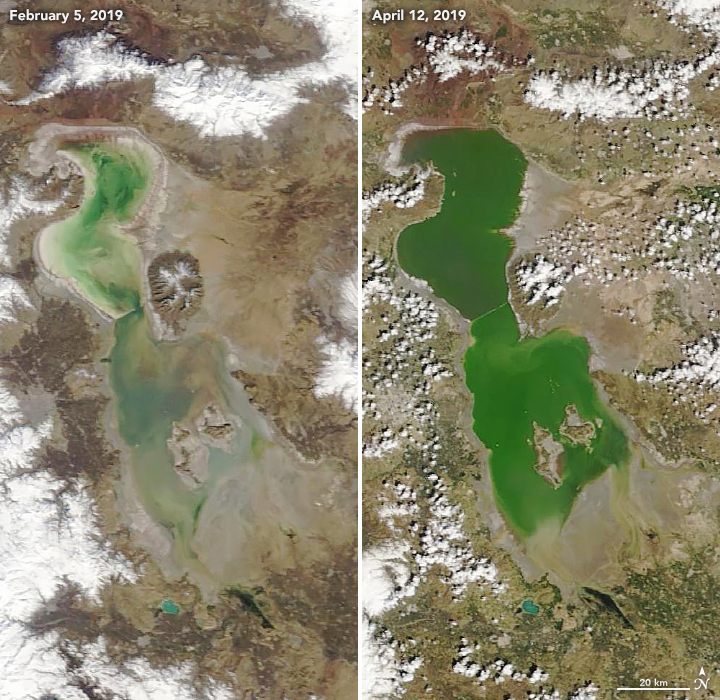

|
Reviving the Shriveled Lake Urmia Intense spring rains bring relief to a desiccated lake.
| |
Once the second-largest saltwater lake in the Middle East, Lake Urmia attracted birds and bathers to bask in its turquoise waters in northwest Iran. Then beginning in the 1970s, nearly three decades of drought and high water demands on the lake shriveled the basin, shrinking it by 80 percent. Recent torrential rains have replenished the water levels of this aquatic gem once known as “the turquoise solitaire of Azerbaijan.” At its greatest extent, Lake Urmia once covered a surface area of 5,000 square kilometers (2,000 square miles). The images above show Lake Urmia (also Orumiyeh or Orumieh) on April 9, 2018, and April 12, 2019. The images were acquired by the Moderate Resolution Imaging Spectroradiometer (MODIS) on NASA’s Terra satellite. Officials report that the lake’s surface area reached roughly 3,000 square kilometers (1,200 square miles) in April 2019—expanding its volume nearly two-fold from a year ago. The fresh pulse of water came from intense rains during the fall of 2018 and spring 2019. In late March and early April 2019, 26 of Iran’s 31 provinces were affected by deadly flooding from the rain and the seasonal melting of snow cover in the mountains. 
The images above, acquired by Terra MODIS, show the lake on February 5, 2019, and April 12, 2019, before and after the recent floods in the region. The rains were reported to be the heaviest Iran has seen in 50 years. After the spring rains, the depth of the lake increased by 62 centimeters (24 inches) compared to the spring of 2018. Instrument:Terra - MODIS
|